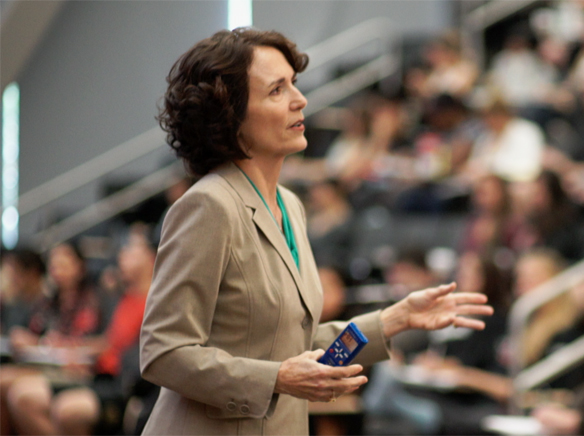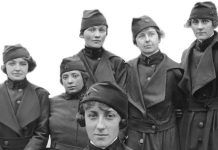By Philippa Villalobos and Albert H. Fulcher
By Philippa Villalobos and Albert H. Fulcher
San Diego became the second only city in America to host the GI Film Festival San Diego, originating in Washington DC. With a wide variety of films that focused on the lesser known true stories in American history, this festival was full of wonderful surprises and true testaments that expanded history, brought thoughts of America’s future and gave an up close and personal view of the men and women of our Armed Forces, American leaders that ranged from thought provoking ideals, and the future of the United States as a world power. Out of the 28 films selected for the festival, 16 held West Coast premieres, and some had East County ties.
Major sponsors of the GI Film Festival San Diego were KPBS and Sullivan Solar. Kicking off the festival was “USS Indianapolis: The Legacy” at the Museum of Photographic Arts Balboa Park on Sept. 14. This film also closed the festival on Sept. 18 with an award ceremony held afterwards. This festival allowed hundreds of people support local filmmakers within the San Diego County region.
Winners of the GI Film Festival include:
Best Documentary Short “American Umpire”
Best Narrative Short “The Light Once Captured”
Best Documentary Feature: “USS Indianapolis: The Legacy”
Best Student Film: “Love is No News”
Local Choice Award: “USS Indianapolis: The Legacy”
Audience Choice Award: “USS Indianapolis: The Legacy”
“USS Indianapolis: The Legacy”
Fifteen years in the making, this 98-minute documentary delved into the heart and soul of the last US ship sunk in American history during World War II. Although many know some of the details of the USS Indianapolis, this film went beyond the ships sinking by a Japanese submarine after delivering the key components to the nuclear bomb used to bomb Hiroshima, and the five days that more than 800 sailors spent in shark infested waters with no one looking for them. Scattered out at sea, once recovered, a little more than 300 survived. But this film went above and beyond telling this story with personal interviews with survivors many years later and told the history of how the captain was used as a scapegoat for the incident, and how the surviving crew finally broke years of silence to have him exonerated. This took many years, finally resolved when former president Bill Clinton was in office.
Not only did this film give an accurate and spectacular account of the tragedy of the USS Indianapolis, but through the use of interviews of the survivors and those that helped and witness the recovery of them, created a storyline that was captivating from beginning to end. This film, although a documentary, had all the essentials of great filmmaking. It taught the many things of this incident that you would never read in a history book and many of the things talked about in the movie were harrowing when looking at how the Armed Forces and its leaders dealt with this tragedy. It provoked thought with each frame, as it tethered emotions of sadness, anger, despair, laughter and joy together seamlessly and with reason. As despairing as the subject was, this film was incredibly entertaining and could and should be used in teaching American history for the foreseeable future.
Attending the film were three survivors that were interviewed in the film, and several of the rescuers and personnel that helped the survivors in the days and weeks following the dramatic and unparalleled rescue. One of which was George Barber of the Santee/El Cajon area who served in Samar where some of the crew was taken after rescue, transporting some of the crew off ships into hospitals.
“American Umpire”
An umpire plays a crucial role in holding baseball games together, administering rules and ensuring a fair game for both teams. “American Umpire”, directed by James Shelley and produced and written by Elizabeth Cobbs, compares America’s foreign policy to the role of an umpire in sports. The film is based off of the book “American Umpire,” also written by Elizabeth Cobbs and published by Harvard University Press. Cobbs and Shelley are married and live in Mt. Helix.
The film explores American foreign policy throughout history, starting with George Washington’s views to neutrality in world matters to the Truman Doctrine which changed that forever. It also questions how America’s role in foreign wars and conflicts will evolve in the future. It was unbiased in nature, and with an impressive array of interviews from top U.S. officials, it showed the reality of division on whether America should be in its position as the police of the world, and how it does not share the burden of foreign conflicts equally with our NATO allies. Many interviewed believed that as a nation we need to continue to support and defend any country with its democracy at stake, and not to do so would be a catastrophe that the world could not withstand. Others believed that going back to our Founding Father’s belief in neutrality and working on the problems in our own country is a better solution to the American people than getting involved in foreign conflicts is the key to America’s future prosperity.
Former professor at SDSU, Cobbs wanted to open up the history of foreign policy to all Americans and was inspired to make the film to broaden the audience of her book.
Cobbs said, “It just seemed to make sense to try to take those things and really put it out there in a way that lots of people could find interest in it.”
Cobbs makes history accessible and helps people understand the past so they can look to the future and get involved in where the country is heading.
“Especially foreign policy because it’s so complex, people feel like they just have to throw up their hands and let some expert figure it out, but that’s not true,” said Cobbs.
Shelley agreed that it is important all Americans take part in the conversation of foreign policy.
“We wanted to make an educational film that would level set the audience on how we got into our current role and then have a non-partisan discussion of what the options are going forward,” said Shelley.
The film was also made to include all ages in foreign policies and recognize the ideas from all generations and groups of people. Cobbs revealed, “One thing we found in making the film, is that there’s a lot of, some significant differences between what more older people think about these things and what younger people think.”
The film is especially unique because it avoids political agenda and bias to ensure the discussion on foreign policy remains open and comprehensive. Shelley said that they worked hard to keep the film impartial to all ideas and find experts to include in the film that would achieve this. The film includes interviews with three secretaries of state, Nobel Prize winners, Pulitzer Prize winners, generals and other informed professionals in the area of foreign policy who inform and spark interest within the audience.
Overall, the film was an excellent piece of the GI Film Festival, serving as educational and interesting. It is important to take part in the discussion of the country’s future and this film serves as a superb foundation to understand and develop ideas on American foreign policy.
“The Year of the Tiger – JFK 1962”
The film “The Year of the Tiger – JFK 1962”, directed by Joe Looby, was an informative addition to the GI Film Festival which took the audience through in depth history of the Cuban Missile Crisis. The film displayed former president John F. Kennedy and the decisions he was forced to make concerning Cuba and Berlin, while protecting the world from going into a nuclear war. With real audio from Kennedy, which he kept secret tapes running in the White House while in office, the film portrayed history through the president’s perspective. While the film was very educational and historically rich, yet the presentation of the film lacked creativity. Nonetheless the context was crucial to American history and provided a detailed display of the president’s role in the well being of American citizens and political tension across the globe.














